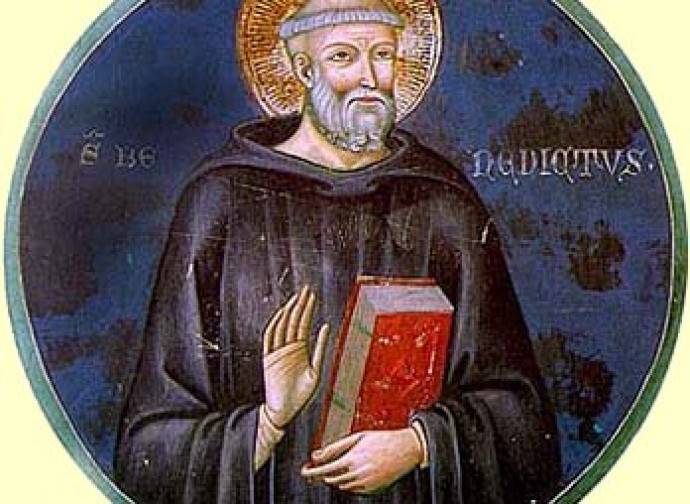Saint Benedict of Aniane
He was among the protagonists of the Carolingian Renaissance, defended orthodoxy and contributed to spreading the Rule of Saint Benedict of Nursia throughout the Holy Roman Empire

Saint Benedict of Aniane (c. 750-821), was among the protagonists of the Carolingian Renaissance, defended orthodoxy and contributed to spreading the Rule of Saint Benedict of Nursia throughout the Holy Roman Empire, integrating it with some features from other monastic traditions. Due to his austere holiness and the trust awarded him by Charlemagne (742-814) and especially by his successor Louis the Pious (778-840), this man of God had a significant influence on the history of the Church.
He was born in the south of France from aristocratic parents of Visigothic origin, who called him Witiza. His education took place at the Frankish court of Pepin the Short, whose nephews were his fellow-students. With a military career in mind, he participated in Charlemagne's Italian campaign against the Lombards (733) but a particular event which occurred during this war caused him to change his life: in an attempt to save his brother he risked death by drowning. He then resolved to become a monk at the abbey of Saint-Seine, assuming the name of Benedict.
During his early years in the monastery he began to study the different monastic rules of Saint Basil, Saint Benedict, Saint Columba, Saint Pachomius, among others. This study would result in the drafting of a collection, the Codex regularum, containing 27 rules, practically all the ones he knew. Another seminal work was the Concordia regularum, a commentary on the Benedictine Rule, with extracts from other rules to demonstrate that this was the best compendium of the ancient monastic traditions. In the meantime, he had founded an abbey at Aniane, Languedoc, where the Benedictine Rule was partially integrated with that of Saint Columba. The monastery of Aniane soon became a great spiritual and cultural centre; under Benedict's guidance, it came to count more than 300 monks.
Benedict's reform of monasticism was facilitated by the support of the Carolingian court, as well as by some outstanding clerics, such as Blessed Alcuin of York (732-804), abbot at the monastery of Marmoutier (founded by Saint Martin of Tours) and master of the Schola Palatina, a centre of the cultural renaissance started by Charlemagne, in which the Church and the Benedictine monasteries played a crucial role. In 816-817 Louis the Pious summoned all the abbots of the Empire to Aachen for the promulgation of the monastic rule prepared by Benedict: this document established the observance of the Benedictine Rule in all abbeys, allowing small adjustments based on the climate and the preservation of certain traditions. This was a milestone in the history of the Benedictine Order and of the entire European monastic movement.
Saint Benedict of Aniane also distinguished himself in the struggle against adoptionism, a heresy that denied the eternal divine nature of Christ (with multiple variations over the centuries). It had spread to western France and Spain through the bishops Elipandus of Toledo and Felix of Urgell. Benedict wrote three treatises and several letters to refute adoptionism. The heresy was condemned by the councils of Regensburg in 792, Frankfurt in 794 and Aachen in 799. Benedict also went on a mission to the Marca Hispanica, a region that coincided with the Pyrenees belt: with his charism and theological competence he succeeded in bringing many people, both clerics and ordinary laymen, back to orthodoxy.




